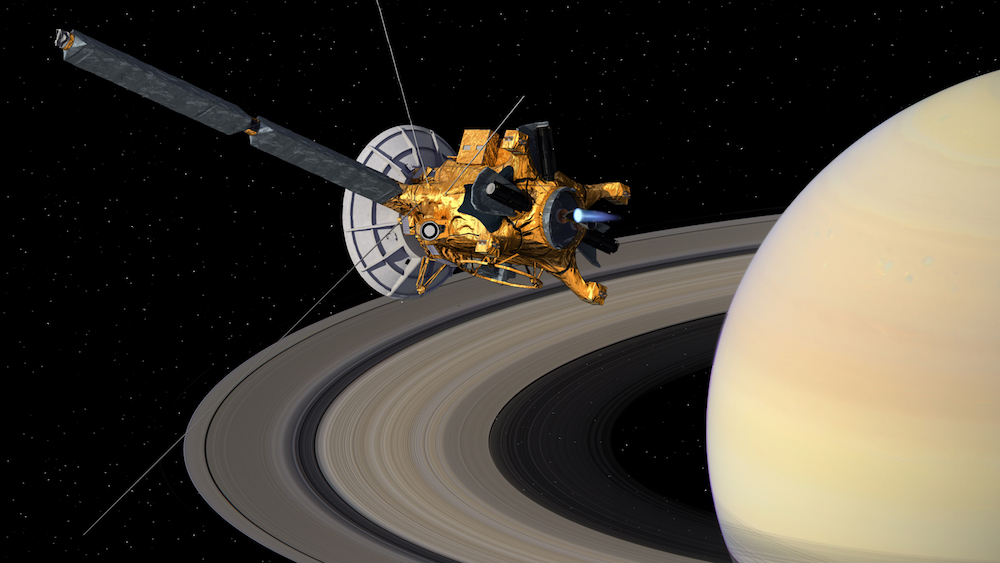 The Cassini mission to Saturn launched 20 years ago, on October 15, 1997. It took seven years to reach Saturn, and has been orbiting and intensely studying Saturn ever since…until last week when the mission ended in a final dive into Saturn’s atmosphere. The mission studied Saturn, its famous rings, and its many moons using a suite of instruments that observed a broad range of wavelengths from ultraviolet, to visible, infrared, and radio as well as examining dust, charged particles, and magnetic fields. It also delivered the Huygens probe that descended through the atmosphere of Saturn’s giant moon, Titan.
The Cassini mission to Saturn launched 20 years ago, on October 15, 1997. It took seven years to reach Saturn, and has been orbiting and intensely studying Saturn ever since…until last week when the mission ended in a final dive into Saturn’s atmosphere. The mission studied Saturn, its famous rings, and its many moons using a suite of instruments that observed a broad range of wavelengths from ultraviolet, to visible, infrared, and radio as well as examining dust, charged particles, and magnetic fields. It also delivered the Huygens probe that descended through the atmosphere of Saturn’s giant moon, Titan.
In this edition of How on earth, we have two scientists from the Cassini mission team. Dr. Larry Esposito is a Professor at the Astrophysical and Planetary Sciences department at the University of Colorado at Boulder and member of the Laboratory for Atmospheric and Space Physics at CU. Dr. Carly Howett is a planetary scientist and manager at the Southwest Research Institute in Boulder. They share with us some of the science from Cassini-Huygens and experiences working on such a long-term and successful space mission.
Host / Producer / Engineer: Joel Parker
Additional Contributions: Beth Bennett, Shelley Schlender
Executive Producer: Alejandro Soto
Listen to the show:
Podcast: Play in new window | Download (Duration: 28:35 — 26.2MB)
Subscribe: RSS





 With graduation season is upon us, or in many cases in the rearview mirror, today’s edition of How on Earth is the first of a two-part “Graduation Special”. Our guests in the studio today are scientists who recently graduated with – or soon will receive – their Ph.D. They talk about their thesis research, their grad school experiences, and what they have planned next.
With graduation season is upon us, or in many cases in the rearview mirror, today’s edition of How on Earth is the first of a two-part “Graduation Special”. Our guests in the studio today are scientists who recently graduated with – or soon will receive – their Ph.D. They talk about their thesis research, their grad school experiences, and what they have planned next. Morgan Rehnberg – CU Boulder,
Morgan Rehnberg – CU Boulder,  David Horvath – Colorado School of Mines,
David Horvath – Colorado School of Mines,  Joseph Lee – CU Boulder,
Joseph Lee – CU Boulder,